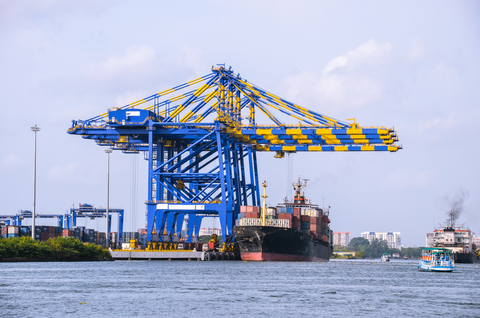
In October, a three-day strike by the International Longshoremen’s Association (ILA) at East and Gulf Coast ports brought the country to a standstill. After reaching a temporary agreement, the strike ended, but the issue is far from resolved. The ILA and U.S. Maritime Alliance (USMX) agreed to extend the current contract through mid-January while continuing negotiations for a long-term deal. However, if a resolution isn’t reached, another strike could occur in January, and the stakes are high.
The East and Gulf Coast ports handle more than half of all U.S. imports, making a second strike potentially devastating for the economy. Prolonged disruptions could lead to shortages and price hikes on everyday goods such as groceries, clothing, and electronics, which would affect workers and families nationwide.
Historically, strikes of this magnitude have cost the economy billions of dollars. Experts predict that the cost of an ILA strike in 2024 could range between $3.8 billion to $4.5 billion per day. Small businesses would be especially hard-hit, already struggling with inflation, labor shortages, and tighter margins.
One of the main points of contention between the ILA and port operators is infrastructure modernization. U.S. ports, especially on the East and Gulf Coasts, are struggling to keep pace with the increasing volume of goods being imported. Modernization efforts, such as incorporating new technology to boost efficiency, are seen as necessary to prevent the U.S. from falling behind global competitors. However, the ILA fears that these advancements could lead to job losses, despite previous contracts guaranteeing job security during modernization efforts.
The ILA’s push to halt the modernization of ports, including technology integration already permitted at West Coast ports, could hinder future growth. This could reduce the capacity of U.S. ports, negatively impacting the economy and international trade. The USMX argues that continued modernization is crucial for improving worker safety, increasing efficiency, and ensuring the competitiveness of U.S. ports.
While significant strides have been made in negotiating pay, the issue remains unresolved. Last fall, the ILA demanded a 77% wage increase over six years, which was rejected by port operators. While the ports have proposed a 40% increase, they are waiting for full contract ratification by January 15, 2025. In the meantime, dock workers continue to receive competitive wages, with those in New York/New Jersey averaging $350,000 annually. If the current offer is accepted, wages could reach $500,000 in some locations, with full healthcare coverage included.
A prolonged strike is a dangerous gamble for the future of the U.S. economy. ILA President Harold Daggett has made no secret of his willingness to continue strike action to secure the union’s demands, regardless of the economic consequences. A strike at these major ports, which handle over 68% of U.S. containerized exports and 56% of imports, would send shockwaves throughout the economy, impacting small businesses, consumers, and workers alike.
The ripple effects of a strike would be felt across industries, from retail to construction, as businesses dependent on port operations experience disruptions. A 30-day strike could result in losses of hundreds of millions of dollars per day at key ports such as New York/New Jersey, Virginia, and Houston.
The future of U.S. ports is at a crossroads. On one hand, the need for modernization is clear—without technological upgrades, U.S. ports risk falling behind global competitors. On the other, ensuring fair wages and job security for longshoremen is essential for maintaining a strong workforce. Striking a balance between modernization and worker protections is critical, as is avoiding a second strike that could wreak havoc on the U.S. economy. The outcome of ongoing negotiations will have lasting implications for workers, businesses, and the nation’s global competitiveness.
